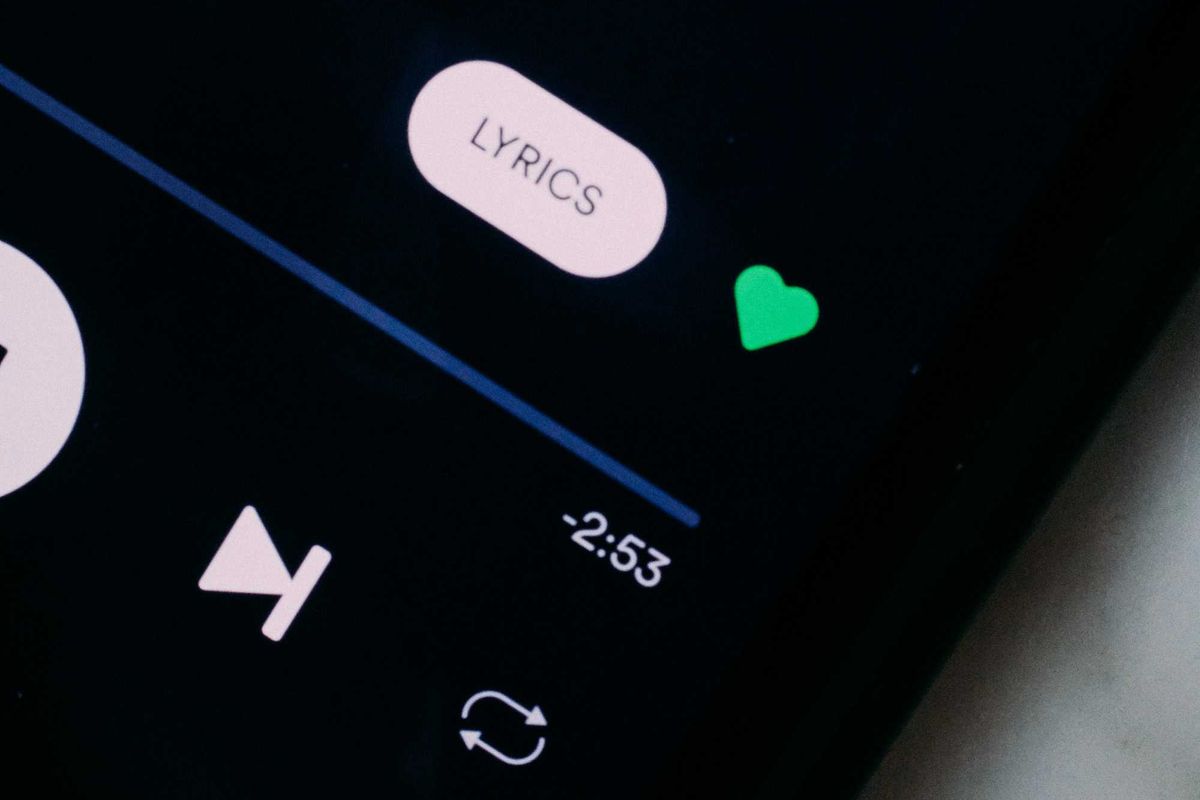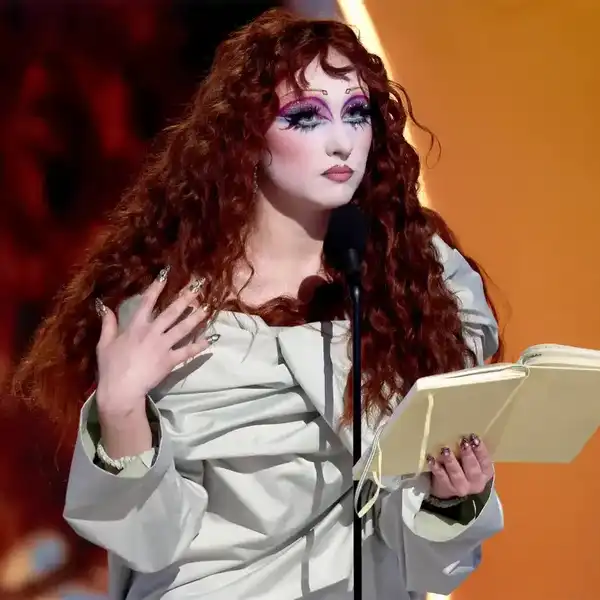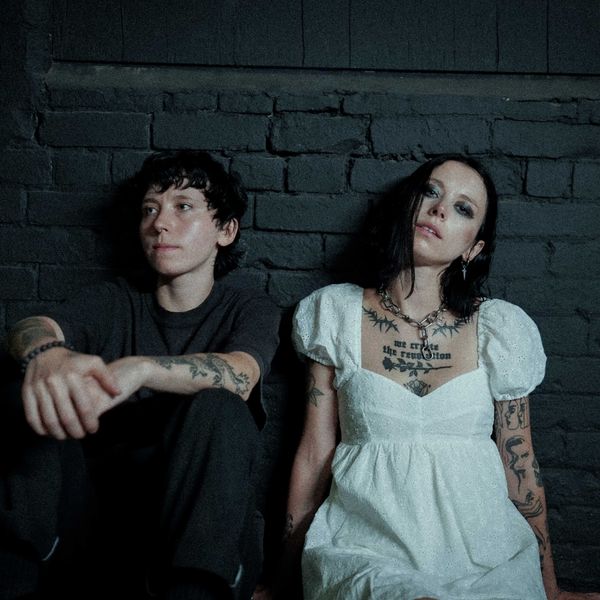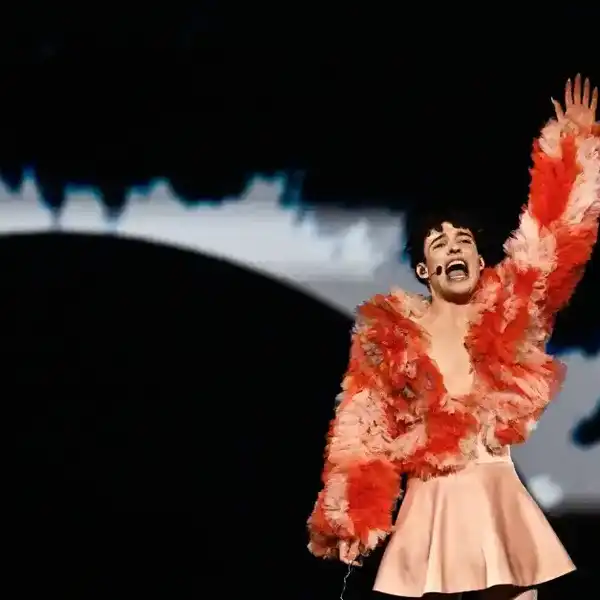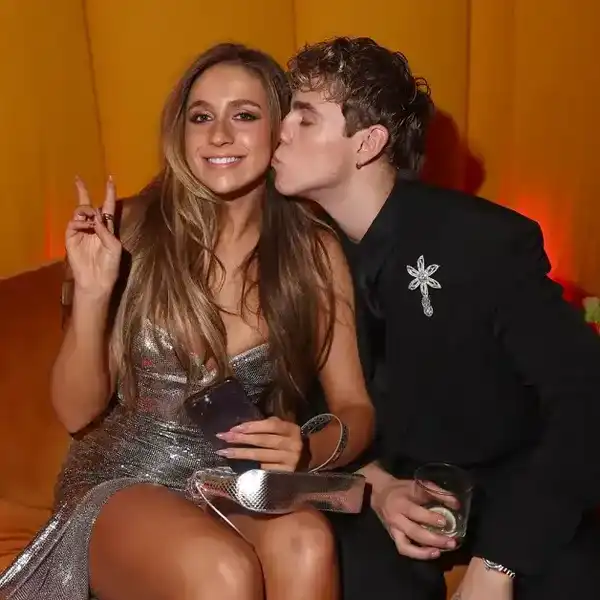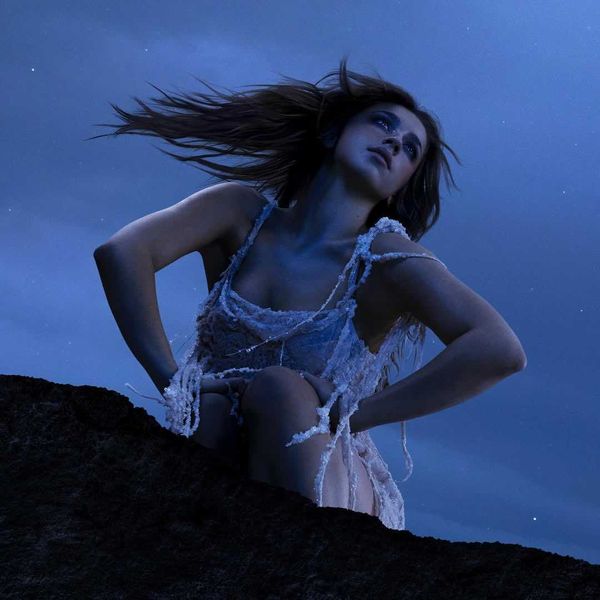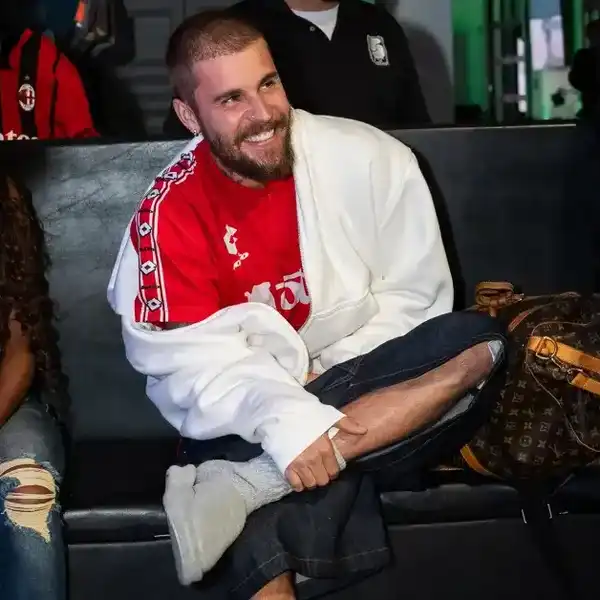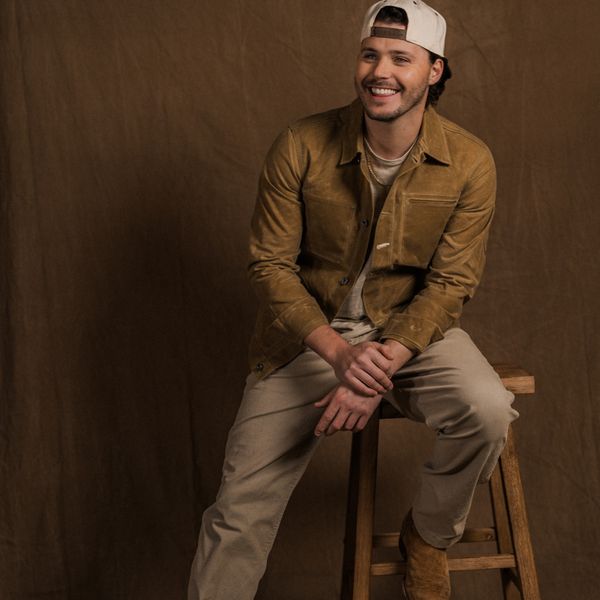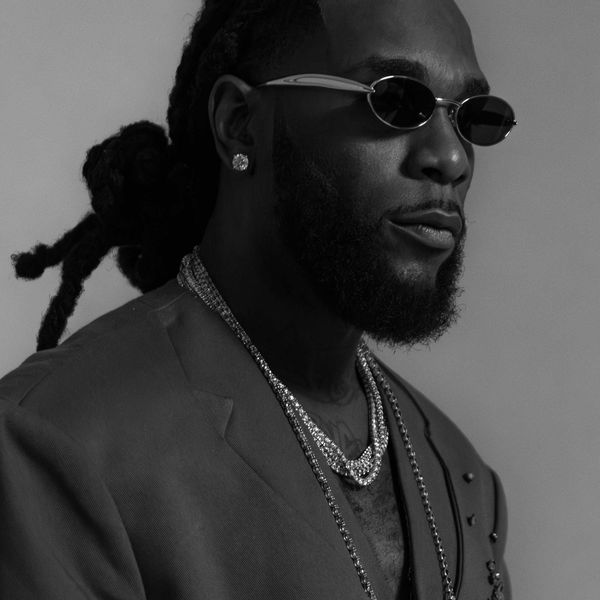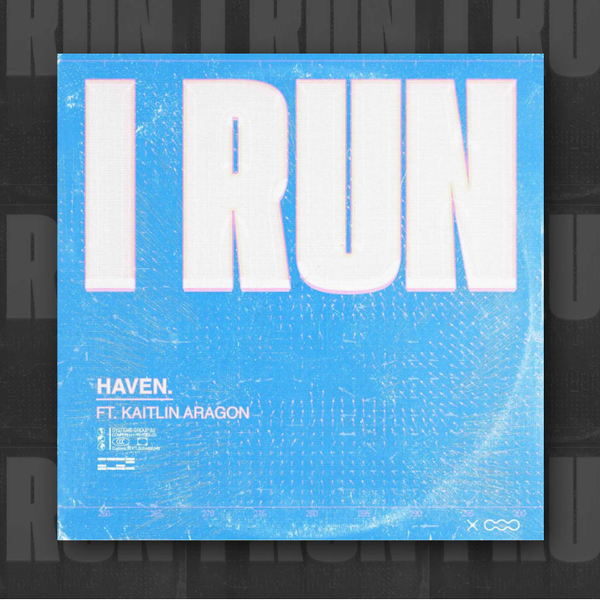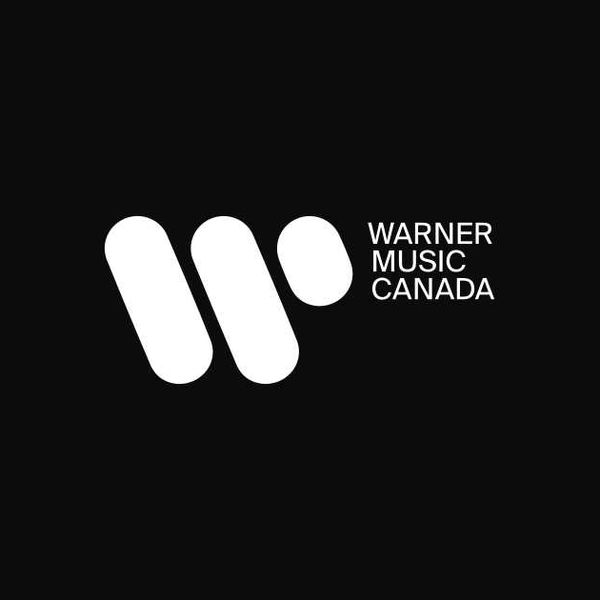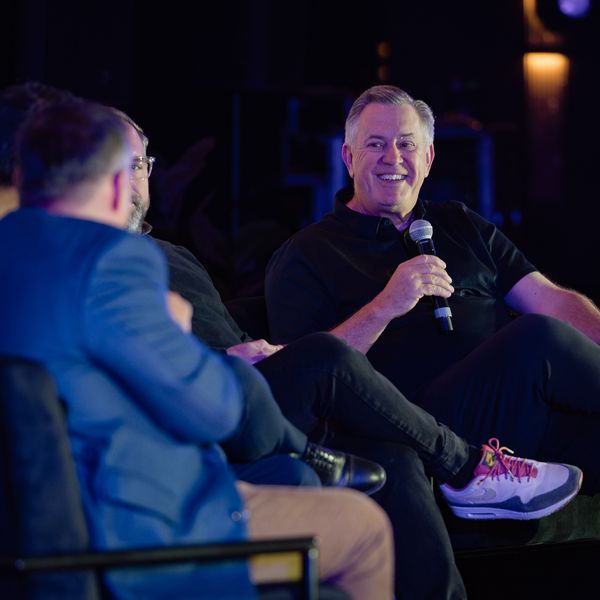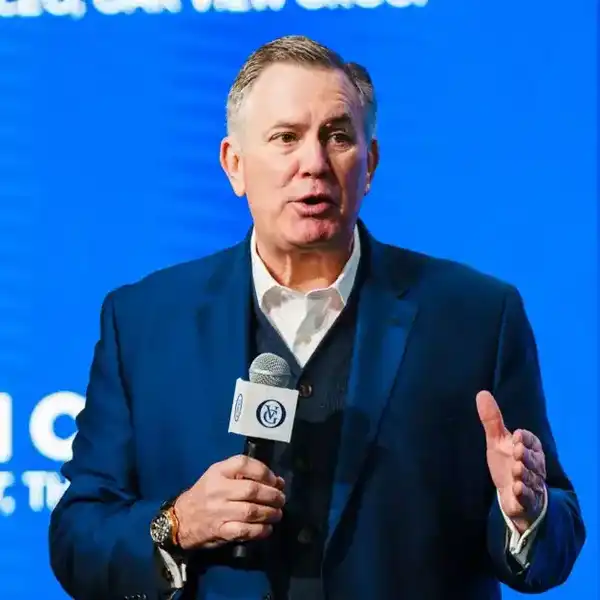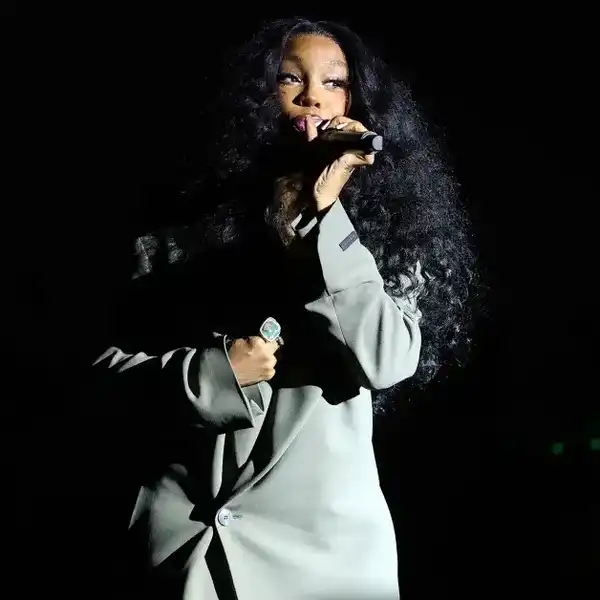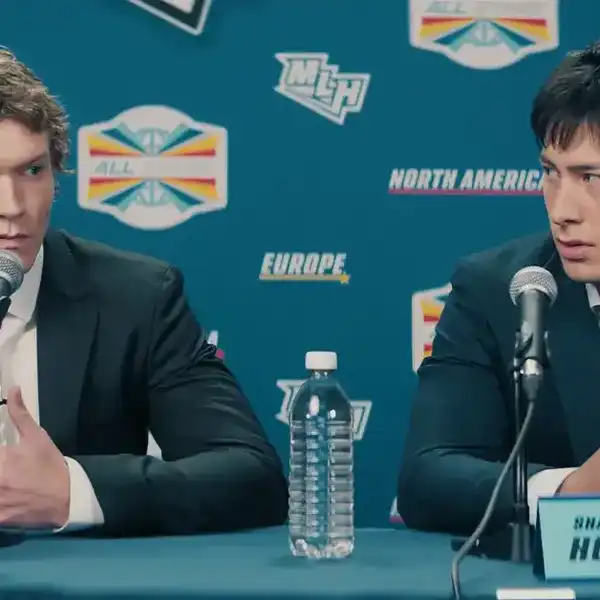Billboard’s Greatest Pop Stars of the 21st Century: No. 4 — Drake
We examine the century in Drake, who came from practically out of nowhere to push hip-hop further into pop’s centre than ever before.

Drake
With the first quarter of the 21st century coming to a close, Billboard is spending the next few months counting down our staff picks for the 25 greatest pop stars of the last 25 years. You can see the stars who have made our list so far here — and now, we examine the century in Drake, who came from practically out of nowhere to push hip-hop further into pop’s center than ever before. (Hear more discussion of Drake and explanation of his list ranking on our Greatest Pop Stars podcast, with his episode debuting Wednesday, Nov. 13.)
In 2018, hip-hop’s takeover of popular music was officially complete. As streaming had replaced radio as the dominant chart-driving form of music consumption, rap blanketed the landscape to an unprecedented degree, with a full two-thirds of the 75 titles on that year’s Year-End Streaming Songs tally belonging to hip-hop artists. On the Billboard Hot 100, the top spot was dominated by ascendant MCs like Cardi B, Travis Scott, Childish Gambino, Post Malone and the late XXXTENTACION — with even non-hip-hop chart-toppers like Camila Cabello and Maroon 5 turning to guest rappers to help get their hits over the top. It was the genre’s most triumphant mainstream year yet, and the guy at its forefront was both the leading hitmaker of the time and the artist whose decade of success leading up to ’18 helped make the whole thing possible: Aubrey “Drake” Graham.
From a sheer chart numbers perspective, Drake’s accomplishments simply dwarf every other artist of the 21st century. No other artist of the period can match his combination of 13 Hot 100 No. 1 singles and 13 Billboard 200 No. 1 albums — only The Beatles, who Drake got tattooed on his left forearm in 2019 after passing one of their Billboard benchmarks, can claim the same historically — and no other artist of any time is even within earshot of his 338 career Hot 100 entries, an all-time mark he first passed in 2020 and has put farther in his rearview every year since. (He’s also the historical pace-setter for most top 40 hits, 206, and top 10 hits, 78, on the all-genre songs chart.) Drake’s modern-day ability to chart every track from his new albums at once — sometimes taking over nearly the whole top 10 — of course gives him volume advantages there in ways beyond what his pre-streaming predecessors had available; nevertheless, in a hits-based business like pop stardom, Drake clearly stands alone among his peers.
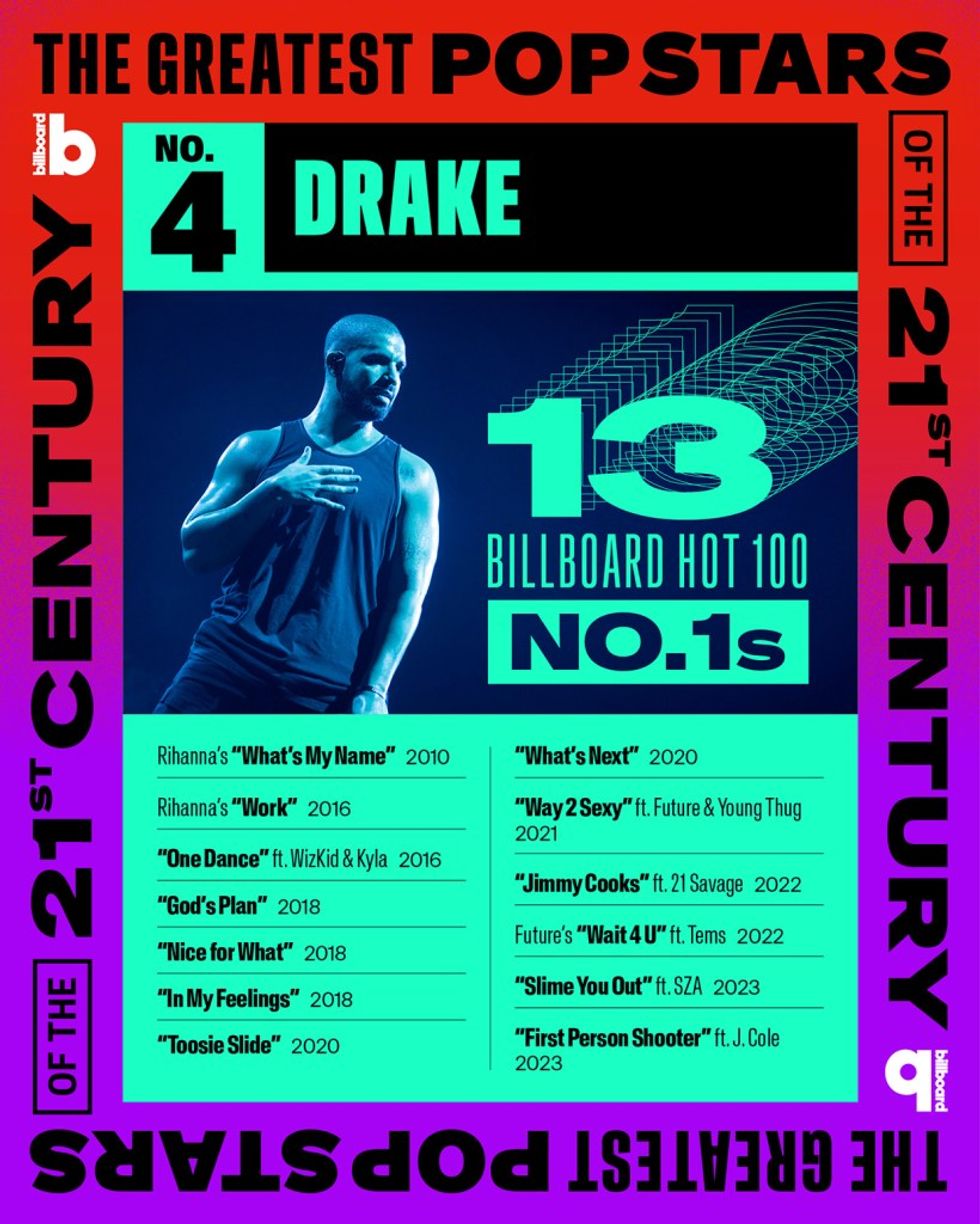
But impressive as his chart figures are, Drake’s impact on his era goes well beyond the stats. From the moment he first became a mainstream proposition in 2009, the Toronto MC widened the parameters of hip-hop stardom — both in the sound and content of the genre’s biggest hits and the background of and image projected by the hitmakers behind them — while also tugging it towards the mainstream’s middle. Unlike many of his forebears, who also came up through the mixtape circuit and garnered underground acclaim before making their bid for the mainstream, Drake never really “went pop”; he simply always was pop, in a way that felt core to his artistic identity without ever interfering with his proficiency as a rapper. And plenty of other artists followed in his genre-blending, emotionally forward path — by the mid-2010s, entire radio playlists were filled to the brim with songs that sounded like, as the artist himself once put it, “Drake featuring Drake.”
And while he may have never had the same sort of larger-than-life persona that pop star peers like Kanye West or Lady Gaga had — he can’t quite match their iconic Grammys or Video Music Awards moments, for instance, or their ability to make headlines with their public statements (fashion, political or otherwise) — Drake found other, more 21st century ways to ensure his cultural impact was always felt. He understood how to use the internet and social media to his advantage better than any other star of his era, commanding platforms like Twitter and Instagram with a reach and virality that made even the biggest award-show stages seem small by comparison. He used his early cross-platform success to springboard his way to high visibility across mediums, becoming nearly as ubiquitous in the worlds of TV and sports as in music. And he intertwined his narrative with that of several of the other biggest artists of the period — sometimes as collaborators, sometimes as combatants, often both — ensuring that several of the other artists discussed in this list couldn’t have their stories told without major mention of his own.
For that first decade of his career, Drake’s culture-conquering greatness was undeniable — not just with his chart-blanketing hits and his overall mainstream ubiquity, but with some of the most beloved albums of the period, a peerless run of feature appearances (many boosting their lead artists to national renown) and even one of the era’s great videographies. No one could challenge Drake’s supremacy during this period; when two of his more fearsome competitors explicitly tried to, in 2015 and 2018, respectively, they ultimately just ensured that Drake ended both years more popular and epoch-defining than ever.
His reign seemed it might last forever, though in 2024, he has finally been brought low. First, a run of less-acclaimed albums and singles achieved commercial success but left his once-bulletproof standing newly vulnerable, and then a similarly mighty challenger exposed every one of those vulnerabilities, proving that after 15 years, the rap world was extremely ready for a new top dog. But those 15 years — and that first decade in particular — ensure that while Drake’s current standing is very much in question, his all-time ranking is not; his singular legacy is written in stone at this point, never to be erased.
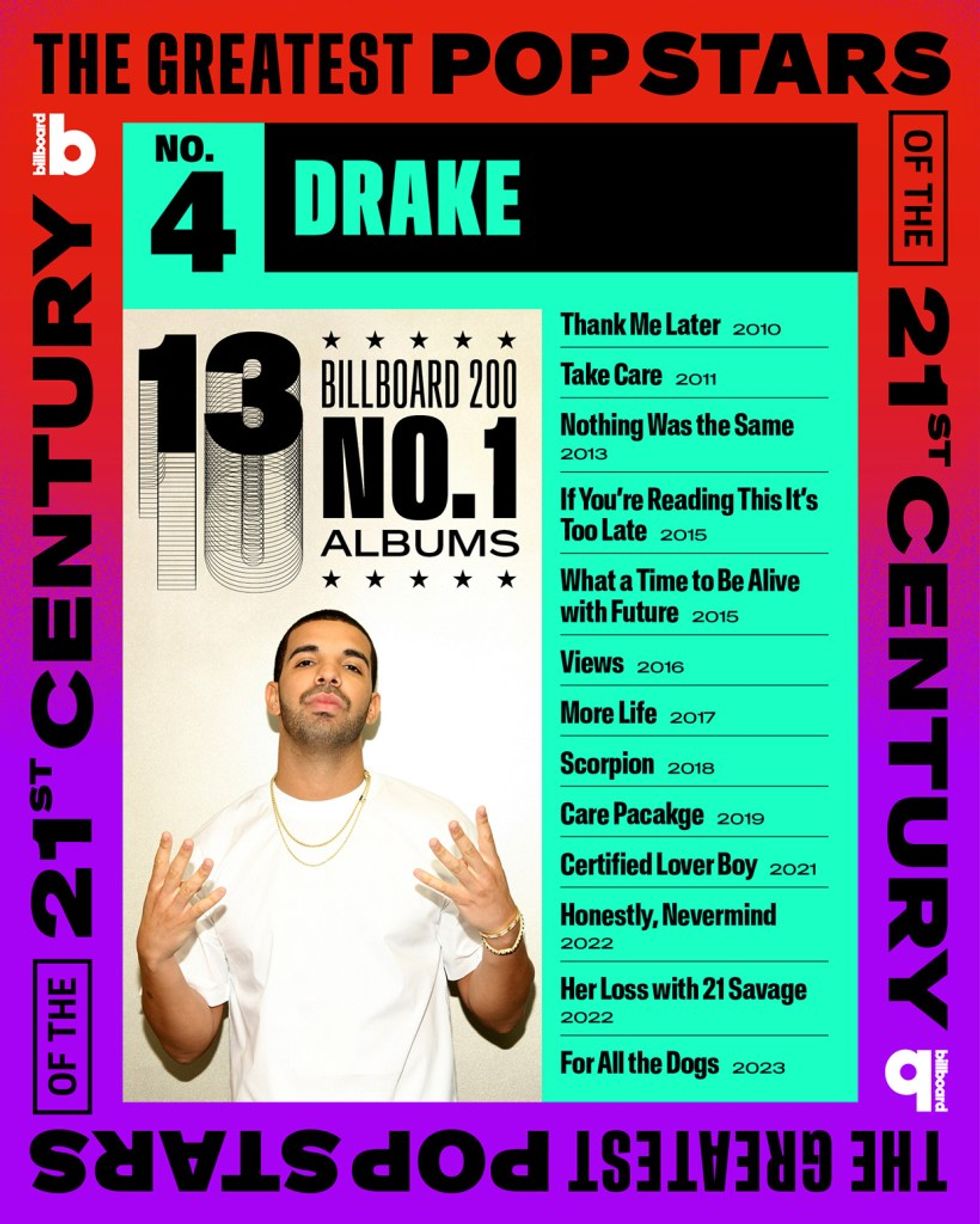
None of this would’ve been foreseeable back in the mid-to-late ’00s, when Drake was still an unsigned hype making his name through mixtapes like 2006’s Room for Improvement and 2007’s Comeback Season. At that point, the rapper was best known (to Canadian audiences in particular) as an actor, namely for his role as the wheelchair-bound Jimmy Brooks on teen soap Degrassi: The Next Generation; he’e record for his tapes at night after filming for the day was done, even coming back to the set afterwards to sleep so he wouldn’t end up showing late to shoots. The mixtapes were unpolished, but showcased Drake’s unique voice and style, already starting to blend singing and rapping, with a clarity that cut through his beats — whether they were borrowed from other artists, or helmed by eventual go-to collaborators like Boi-1da, Frank Dukes or musical soulmate Noah “40” Shebib — and demanded attention.
Soon, Drake got the attention of the man who would change his career: Lil Wayne, who invited Drake on tour and began collaborating with on songs that would appear on the latter’s game-changing third mixtape, 2009’s So Far Gone. While Drake still lifted some contemporary beats for the set, the most striking productions were produced with 40, who by that point had pioneered a hypnotic signature sound based around heartbeat-like drums, underwater-sounding synths and just enough instrumental coziness that his beats never sounded alienating in their chilliness. Songs like “Lust for Life,” “Houstonatlantavegas” and “November 18th” were like nothing rap fans had heard before — narcotically slow and nakedly introspective, but sonically booming and melodically intoxicating.
And unlike most mixtapes of the ’00s, which existed more to build up an artist’s underground buzz rather to cross them over commercially, So Far Gone actually had hit singles. “Successful” perfected the then-established Drake formula, with a submerged synth not-quite-hook, a knocking beat and an instantly memorable chorus — provided in this case by R&B hitmaker Trey Songz, with Wayne also blessing the song with a late-song verse. But the biggest song from the set was Drake’s alone: “Best I Ever Had” was a sweetly lush, old-fashioned (but occasionally R-rated) ode to Drizzy’s best girl — with a hook sampled from the piano sweeps of Hamilton, Joe Frank and Reynolds’ ’70s country Hot 100-topper “Fallin’ in Love,” of all things — that saw Drake playing his own hook man and even his own guest rapper, with a piercing, octave-up flow saved for the final verse. He was the whole package, and the pop world embraced all of it: “Best I Ever Had” reached No. 2 on the Hot 100 in July, establishing Drake as a star.
By the end of 2009, he was already everywhere. Wayne had officially signed Drake to his Young Money label, and Drake was one of the star performers on the label’s We Are Young Money showcase, including its two biggest singles: “Every Girl” and “Bedrock,” both top 10 hits. He was also essentially knighted by arguably the three other biggest MCs in hip-hop at the time — Wayne and West, along with Eminem — with their guest appearances on Drake’s anthemic “Forever,” from the early-LeBron documentary More Than a Game, another top 10 hit. Meanwhile, Drake’s versatility as a guest performer earned him invites to charting singles from the starry likes of Songz, Jamie Foxx, Mary J. Blige and a pair of hits by Young Money boss Birdman. One of those, “Money to Blow,” also featured Lil Wayne boasting about his label’s new not-so-secret weapon: “We gon’ be all right if we put Drake on every hook.”
The importance of Drake having Wayne in his corner at this time can’t really be overstated. In the late ’00s, the man born Dwayne Carter was the biggest rapper (and arguably the biggest artist period) in North America, already a certified legend, with unassailable credibility in both the underground and the mainstream. While Drake attracted his fair share of backlash in his early days, one of the biggest reasons such detractors were kept to a vocal minority was Wayne: In most cases, such a singing, emo-skewing rapper from a middle-class background (and a north-of-the-border hometown with very little history of stateside impact) would never have gotten past ’00s hip-hop’s gatekeeping front lines. But with a co-sign (and several guest appearances) from the most powerful man in hip-hop, tastemakers had no choice but to give Weezy’s new protégé a chance — and Drake’s drive, his talents and his sheer number of hits ensured that once he got his foot in the door, he’d be taking over the entire building before long.
Drake was already so ubiquitous by 2010 that it was easy to forget he still hadn’t even released his official debut album. That would come that June with Thank Me Later, an LP stacked with guest appearances more of the biggest late-’00s rappers — T.I., Jeezy, even Jay-Z — and another handful of established hits in “Over,” the Wayne-featuring “Miss Me” and the West-produced “Find Your Love,” Drake’s first single to only feature him singing. The best set’s tracks hit an emotional and sonic pitch only Drake could reach, making his storytelling feel uniquely vivid and compelling. But the album drew a somewhat mixed response from fans and critics, and following some optimistic early projections from his labelmates and peers, it underwhelmed slightly with 441,000 in first-week sales — still one of the year’s best opening numbers and enough for a No. 1 debut, but lower than the hype (and the bar set by Wayne a couple years earlier with his million-selling Carter III bow) might have suggested.
Drake bounced back from the minor setback the way he would throughout the next decade: with more hits. Most notably, he scored smashes alongside two of the leading ladies of 2010s pop, both of whom he’d collaborate with throughout the decade: Rihanna and Nicki Minaj. Guesting on Rih’s “What’s My Name,” Drake scored his first Hot 100 No. 1 that November, displaying such electricity with his co-star in the song and its steamy video that rumors of a real-life relationship between the two would soon percolate. Shortly after, Drake was featured on labelmate Minaj’s sentimental “Moment 4 Life,” from her own best-selling Young Money debut Pink Friday, which hit No. 13 and launched a million fan ‘ships with Drake’s promsies, “F–k it, me and Nicki Nick gettin’ married today.” Drake’s obvious chemistry with these two fellow megastars further entrenched him in pop’s center, and helped make him a fixture of the hip-hop internet’s quickly growing tabloid gossip machine.
By the time of his sophomore album Take Care‘s release in Oct. 2011, the underperformance of Thank Me Later was a distant memory. The album well outpaced its predecessor both commercially — with 631,000 in first-week sales — and critically, with some of the year’s best reviews. The tracklist was again stacked with established stars like Rihanna (the scorching title track) Minaj (“Make Me Proud”), Wayne (“HYFR”) and increasingly frequent collaborator Rick Ross (“Lord Knows”). But its most notable guests were a pair of newcomers: The Weeknd (“Crew Love” and “The Ride”), a fellow Torontonian who had become the year’s biggest mixtape hype with his Drake-co-signed alt-R&B breakout set House of Balloons, and Kendrick Lamar (“Buried Alive” Interlude), whose Section.80 had made him the toast of the hip-hop blogs. And once again, the most important single was Drake solo: the drunk-dial singalong “Marvins Room” missed the top 20, but its ill-advised relatability struck a chord with both fans and fellow artists, many of whom released their own versions of the self-pity anthem.
Drake kept the momentum rolling right into his third album, 2013’s Nothing Was the Same. He was getting bigger and bigger — “I’m just as famous as my mentor,” he rapped on the album opener “Tuscan Leather,” not inaccurately — and the album’s hits reflected it. Lead single “Started From the Bottom” sounded like theme music for Drake to come out of the Air Canada Centre tunnels to (appropriate, as he was appointed the Toronto Raptors’ “global ambassador” months later), while the sublime grooves and heavens-wide hooks of the Majid Jordan-assisted “Hold On, We’re Going Home” sounded like Drake going for the global pop brass ring. But the full Nothing proved those singles the exception rather than the new rule: Most of the album felt more of a piece with “Marvins Room,” late-night confessionals with intimate productions and barely-there choruses. Nonetheless, the album had an even stronger debut than Take Care, and drew similarly positive reviews — proving that the public was now with Drake, regardless of how commercial his releases were.
By the mid-’10s, Drake was as entrenched in pop music and pop culture as any contemporary artist. While he smartly declined to chase after big crossover features — even his one teamup with fellow Canadian superstar Justin Bieber, 2012’s “Right Here,” was relegated to deep cut status — he found success hopping on remixes to buzzing singles from up-and-coming hitmakers like Fetty Wap (“My Way”), Migos (“Versace”) and iLoveMakonnen (“Tuesday”). Debate rages to this day about whether his intentions with these co-signs were more altruistic or opportunistic, but they undeniably helped raise each artist’s profile in the process. Meanwhile, Drake was becoming more unavoidable across pop culture, both in his public appearances — he hosted both Saturday Night Live and the ESPYs in 2014, excelling in the roles — and in the way his lyrics became part of the dialect on social media, with phrases like “YOLO,” “no new friends” and “motherf–kers never loved us” turning into such common parlance that whatever non-fans remained might not ever realize they originally spawned from Drake hooks.
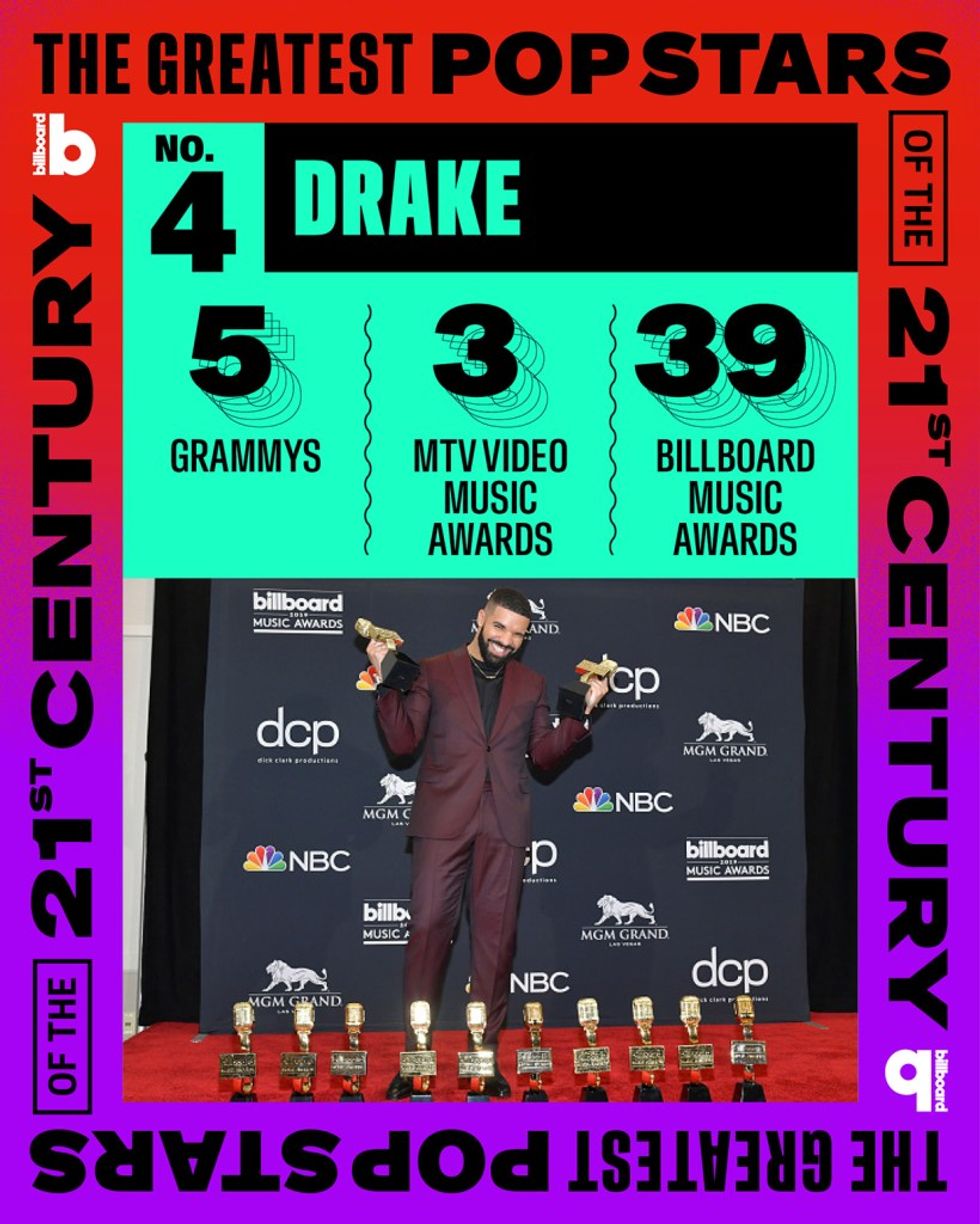
It all led up to a 2015 that was to prove to be the biggest roller-coaster year of Drake’s career to that point. It started out on a relative high note with the release of his “commercial mixtape” — Drake would get increasingly creative with his project labeling over the 2010s — If You’re Reading This It’s Too Late, a distinctly uncommercial, underground-focused project that had no obvious singles but still enraptured fans and critics, drawing some of his strongest reviews and marking his fourth straight No. 1 debut. But that summer, Drake found himself in the public crosshairs when his relationship with Philly rapper Meek Mill went sour, as Meek — evidently hurt by Drake’s not promoting the release of his own Dreams Worth More Than Money album, on whose “R.I.C.O.” the rapper appeared — accused his collaborator on social media of not writing his own raps, with renowned Hot 97 DJ Funkmaster Flex premiering a reference track for Reading‘s “10 Bands” the next day, apparently recorded by Drake’s co-writer Quentin Miller.
The combination of accusations and accuser could have been damning for Drake, whose primary weakness as a teen TV phenom-turned-underground rapper had always been a presumed lack of credibility. As an MC with a more traditional hip-hop background, the respect of the streets and a rising level of commercial success — Dreams debuted at No. 1 on the Billboard 200, albeit with first-week numbers under half of Drake’s — Meek’s comments casting Drake in an unfavorable light carried real weight. Early indications also demonstrated Drake to be unready for the battle, as opening salvo “Charged Up” — released less than a week after Meek’s late-night accusations — fell largely flat. “I can tell he wrote that one tho!” his adversary cackled on Twitter in response.
But rather than await Meek’s response to his undercooked dis, Drake quickly offered another round of return fire — this time with the more-convincing (and aptly titled) “Back to Back.” While in ’90s and ’00s beefs, months would often lapse in between releases, Drake embraced the speed of streaming to both catch Meek off-guard and make him look lethargic by comparison: “I did another one/ You still ain’t did s–t about the other one,” he taunted, as if the four days between Drake’s two disses was an entire album cycle’s length. It worked, though, in large part because the song was a hit: the audience-participation-friendly “Back” hit No. 21 on the Hot 100 that August, getting club and radio play that was largely unheard of for such a dis record. Meek seemed to reel from the one-two, and his own response “Wanna Know” proved too little, too late — days after, when Drake headlined his annual OVO fest, he declared victory with a performance of “Back” in front of a projection of Twitter memes cackling at Meek’s downfall, knowing that winning the social media battle in 2015 was as good as winning the overall war.
And speaking of hits: The Meek feud teed up Drake to have the biggest one of perhaps his entire career. “Hotline Bling” — released just days after “Back to Back” — was the perfect song to capitalize on the moment, a skanking pop&B song with so many brain-sticking hooks that the entire thing sounded like one long chorus. It quickly snowballed into a four-quadrant smash, attracting even more remixes and covers than “Marvins Room,” and absolutely took over the internet — particularly after its accompanying music video, featuring a number of adorably awkward Drake dance moves, became meme fodder for the rest of the year; by late 2015, even certain presidential candidates were singing along and parodying the visual. It stalled at No. 2 on the Hot 100 — no shame in being beat by 25-era Adele — but marked a new commercial and cultural peak for the rapper, one which he celebrated that September with the full-length Future team-up What a Time to Be Alive, a 10-track, chart-topping victory lap that saw Drake waving at an earthbound Meek from his new perch in the skies.
Drake’s 2015 ended up being one for the ages, elevating him so far above his rap competition that his only commercial peers left were Taylor Swift, then hot off the release of 1989, and the aforementioned Adele. Both of those artists had the two things Drake was still missing from his pop star resumé: a No. 1 single as a lead artist, and a million-unit first week. He was about to check off both of those boxes, though, with 2016’s highly anticipated Views LP (1.04 million in its debut frame) and its accompanying lead single, the quickly addictive, Afrobeats-inflected, Wizkid- and Kyla-featuring “One Dance” (a 10-week Hot 100 No. 1). Though the stats proclaimed 2016 to be Drake’s biggest year yet — and another omnipresent No. 1 alongside Rihanna, on her infectious Anti single “Work,” certainly helped with that impression — the feeling was not as triumphant as his 2015, as the 20-track Views drew mixed reviews and was derided by many fans as overstuffed and having corny lyrics (“Chain-ing Tatum,” anyone?).
Drake’s newfound fascination with Afrobeats and dancehall on “One Dance” and follow-up hit “Controlla” (with Popcaan) pointed the way to his globetrotting 2017 “playlist” More Life, which spawned another beloved single in the roller-rink-ready “Passionfruit” and drew positive reviews — a bit of a make-good for his fans from Views, as much as a million-selling 13-week No. 1 can be considered a misstep. Then, his 2018 started off as prosperously as any year of his yet: In January, he released the two-pack Scary Hours, led by the shimmering hands-raiser “God’s Plan.” Despite its subtle hook and lack of a real chorus, “Plan” debuted at No. 1 on the Hot 100 and spent 11 weeks there, becoming another signature hit for Drake — followed a few months later with the similarly massive and acclaimed women-celebrating “Nice for What,” an eight-week No. 1 in total. Drake had become easily the most successful artist of the streaming era by that point, and the highly memorable and meme-able clips for “Plan” (featuring Drake giving away a million dollars) and “What” (built around cameos from female celebrities like Tracee Ellis Ross, Issa Rae and Olivia Wilde) ensured his cross-platform ubiquity.
But just like in 2015, a hot start to Drake’s year was complicated by a burgeoning feud, this time with veteran rapper Pusha T. Drake and Pusha had been trading subliminals on their records for most of the 2010s — the latter calling out the former’s credibility, the former dismissing the latter as beneath him — but things came to a head in 2018 with Push’s “Infared,” which included more obvious shots at Drake. This time, Drake fired back with an entire dis track: May’s “Duppy Freestyle,” aimed both at Pusha and his GOOD Music label boss — and producer of Push’s “Infared” — Kanye West, whose relationship with Drake had long been touch-and-go despite their sporadic collaboration. Push’s “The Story of Adidon” response came days later, with a pair of explosive revelations: the cover art showed a photo of the mixed-race Drake in full Blackface, while the lyrics alleged that the rapper had a son who he’d yet to acknowledge, cutting straight to the point with the accusatory bar: “YOU ARE HIDING A CHILD.”
Drake clarified on Instagram that the photos were taken in 2007 as part of a fashion line shoot meant to represent “how African Americans were once wrongfully portrayed in entertainment,” and while he soon began talking about publicly about his son Adonis, he never released a response track to “Story.” (Houston rap mogul J Prince said later that Drake had a vicious retort dis that Prince advised him not to release, on the grounds that it would “hurt families.”) Instead, Drake brought the focus back to where it was earlier in the year: his hits. First, he won back good will in June by reuniting much of the Degrassi cast for the well-received video to his new single “I’m Upset.” Then, a week and a half later, he released the double album Scorpion, featuring “Plan,” “What” and a new single that was about to eclipse even both of those smashes for overall impact: the New Orleans bounce-inflected “In My Feelings,” based around a City Girls sample and a singalong chorus that went megaviral upon impact, inspiring countless dance challenges and other memes and driving the song to No. 1.
Between “Plan,” “What” and “Feelings,” Drake would spend a combined 29 weeks atop the Hot 100 in 2018 — passing the previous record for a calendar year (set by Usher in 2004) by three weeks. When Scorpion bowed at No. 1 on the Billboard 200 in July (with 732,000 first-week units), it did so while also simultaneously occupying seven of the 10 spots on the Hot 100 – making it the first album since 1991 to generate seven top 10 hits, and the first to ever have all seven at the same time. And Drake’s record-breaking Hot 100 performance in 2018 didn’t even include a potential fourth such chart-topper in Travis Scott’s culture-shifting “Sicko Mode,” which hit No. 1 in large part due to Drake’s prominent (but officially uncredited) featured appearance — one of many such hits he lifted on the charts that year as a guest star, including another pair of top five smashes in BlocBoy JB’s “Look Alive” and Lil Baby’s “Yes Indeed.” Unlike his Meek beef in 2015, Drake didn’t even need to officially “win” the feud this time to once again end the year bigger than ever; he was doing enough winning everywhere else that it didn’t really matter.
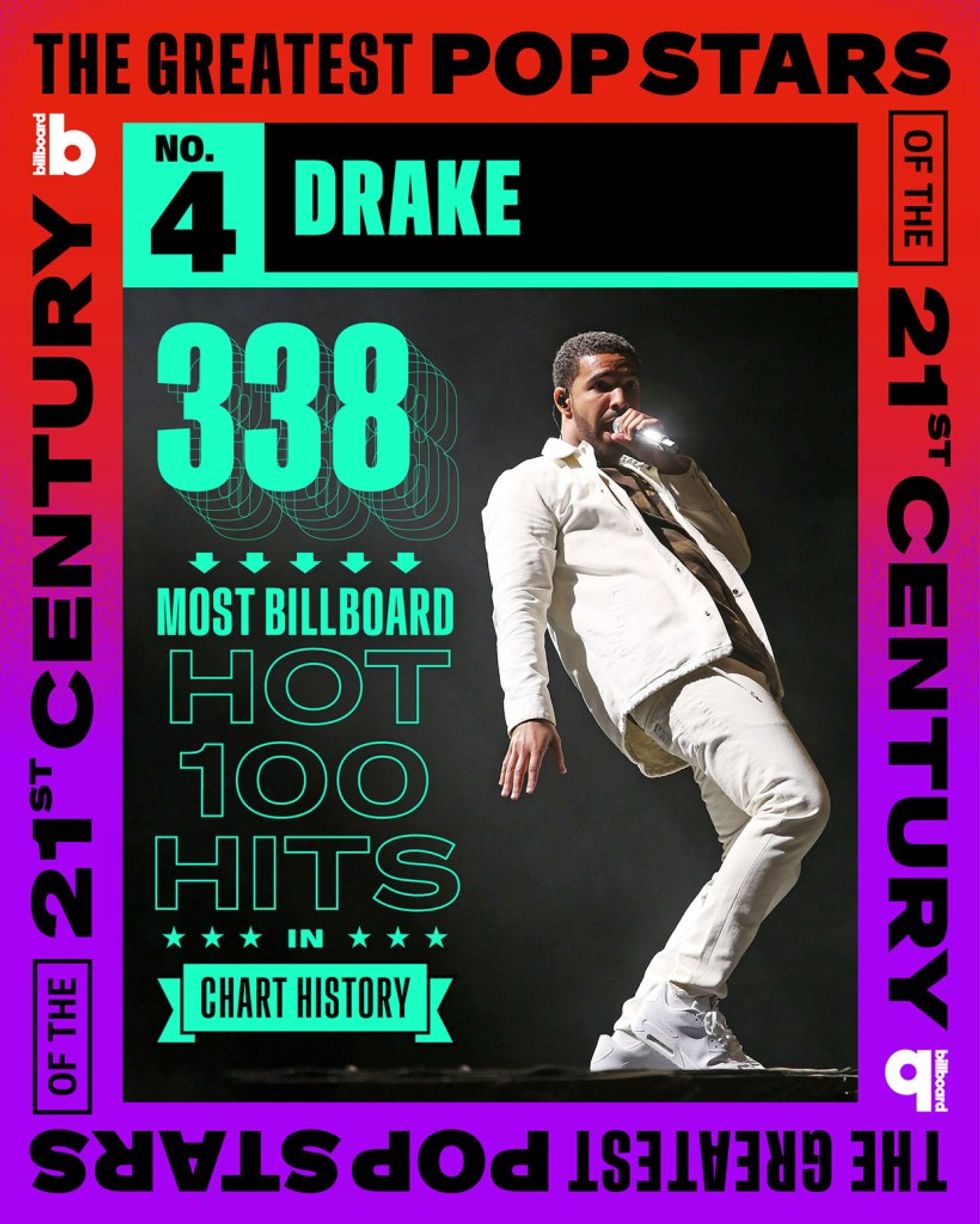
Drake closed the decade still on top of the game, scoring another No. 1 album in 2019 with the loosies-and-leaks compilation Care Package. As the 2020s kicked off, Drake remained a safe bet to debut at No. 1 with essentially every new album and new single — outside of 2020’s No. 2-debuting mixtape Dark Lane Demo Tapes, every new full-length release of Drake’s since 2010’s Thank Me Later has bowed atop the Billboard 200 — though the collective reception for his projects was beginning to slip. “Toosie Slide,” from Dark Lane, also entered atop the Hot 100, but was largely jeered at by fans for its TikTok-courting dance-step chorus, and slid off the chart after 20 weeks. Endurance became a recurring issue for Drake’s new hits — while his trio of Scorpion Hot 100-toppers each lasted at least eight weeks at No. 1, each of the seven No. 1 hits Drake scored over the first four years of the 2020s lasted just one week on top, suggesting he was now better at generating excitement for his new songs than maintaining it.
That also began to extend to his albums. Drake dominated the culture once again in the weeks leading up to his Certified Lover Boy album in 2021, with a clever billboard campaign trumpeting the album’s guests in their various home cities, a winking album cover consisting of emojis of different pregnant women, and a reheating of his high-profile feud with West. This time, though, the hype only really lasted through the release week — an impressive 613,000 units, with a No. 1 debut for Future- and Young Thug-featuring lead single “Way 2 Sexy” — as the set drew middling reviews and failed to generate a lasting hit on the level of the Scorpion classics. Even the Kanye feud lacked the juice of Drake’s past beefs; the back-and-forth was mostly contained to vague lyrical shots and social media swipes, with little real musical impact, and by the time of their joint Amazon-televised Free Larry Hoover Benefit Concert that December, it had been squashed anyway.
Drake remained prolific throughout the first half of the 2020s, releasing both the admirable house music left-turn Honestly, Nevermind and the gratifying 21 Savage full-length teamup Her Loss in 2022, and paying tribute to his day ones with 2023’s For All the Dogs and its later Scary Hours Edition addendum. All of these projects debuted at No. 1 with big numbers, and shoveled more hits onto his by-then-record-setting Hot 100 stat total, but none seemed to totally satisfy fans that Peak Drake had returned — and as he’d begun to lean more fully into a heel persona on record, even making derisive quips seemingly about Megan Thee Stallion’s 2020 shooting on Her Loss‘ “Circo Loco,” it made him a little tougher to root for than it had been early in his career. Nonetheless, he continued to put up numbers no one else in rap could touch, and during a period of struggle for the genre when it came to producing new superstars, it was unclear if or when anyone would emerge as a true challenger to his throne.
In 2024, the challenger finally arrived. Really, Kendrick Lamar been there all along — since 2011, when he first appeared on Take Care, with Drake taking him on the road the following year on the Club Paradise tour — but while the rap superstar’s relationship with Drake had quickly cooled and even turned antagonistic at points, he had never truly invited the 6 God into the ring until his appearance on Future & Metro Boomin’s scorching “Like That” in March. On that song, he rebuffed both Drake and his “First Person Shooter” collaborator J. Cole, who had claimed on that 2023 Hot 100 No. 1 to be part of rap’s “Big Three” along with Drake and Lamar, to which the latter retorted: “Motherf–k the ‘Big Three’/ N—a, it’s just ‘Big Me'” while throwing other shots seemingly at the Toronto MC specifically. The song instantly shot to No. 1 and spent three weeks there, with the entire rap world breathlessly awaiting Drake’s response.
Actually, Cole rose to the challenge first, releasing the new Might Delete Later mixtape the following week, with closer “7 Minute Drill” putting Lamar in its sights. But the track was greeted lukewarmly, and by his headlining set at that Sunday’s Dreamville festival, he was already expressing regret over jumping into the fray and planning to remove the song from DSPs. As the days rolled on and Drake still had not responded to “Like That,” onlookers wondered if maybe he had heeded Cole’s false start and decided not to engage. After all, Kendrick Lamar was a nightmare opponent: the extremely rare veteran peer of Drake’s who had both maintained near-unanimous love from critics and tastemakers while also putting up commercial numbers roughly comparable (if still far from equal) to his. Had he decided to keep his reactions to the track to Instagram emojis — and let his continued chart success speak for him — it would have been disappointing to bloodthirsty onlookers, but nonetheless highly understandable.
But Drake did respond, first with the leaked “Push Ups,” then the SoundCloud-released “Taylor Made Freestyle,” the latter featuring AI-assisted “guest verses” from West Coast legends Snoop Dogg and the late 2Pac. Lamar returned fire a week and a half later with his own “Euphoria’ and “6:16 in LA,” Drake retaliated with “Family Matters” the same day as the latter, and Lamar retorted just an hour after that with “Meet the Grahams.” As hip-hop fans were getting whiplash from the increasingly rapid-fire back-and-forth, both artists were demonstrating their skills impressively in each round, with Lamar as impeccable a verbal tactician as ever and Drake sounding newly re-energized by the beef. Though the sparring was starting to hit well below the belt — Lamar accused Drake of sleeping with underage girls, Drake accused Lamar of being physically abusive to his fiancée, neither accompanying their claims with any real evidence of such wrongdoing — fans were scintillated by both the drama and the artistry on display, and fans of both rappers could at least semi-credibly claim that their guy was leading the battle.
That is, until “Not Like Us.” Released just a day after “Meet the Grahams” — already the most vicious and blood-curdling entry in the beef to that point, which Drake had not yet responded to — the song contained some of Lamar’s most pointed disses yet, including an entire verse calling back to long-held claims of cultural appropriation by breaking down how Drake milked advantageous collaborations with Atlanta-based rappers, ending with the brutal punchline, “You not a colleague, you a f–kin’ colonizer.” But what really made “Not Like Us” sting was just how immediately, obviously great it was: While Drake had prioritized bars and beat-switches over hooks on each of his entries in the feud thusfar, “Us” was brilliantly catchy both in its Mustard-helmed, Dre-worthy string loop and its universally applicable “They not like us!” chorus. You didn’t need to wish for Drake’s downfall to enjoy it; you didn’t even need to know it was part of a larger beef in the first place — it still sounded incredible in any context.
Drake responded one more time, with the exhausted-sounding “The Heart Part VI,” but the damage was done. Kendrick once again had the biggest song in the country: “Not Like Us” debuted atop the Hot 100, spreading from streaming to radio to the streets to the clubs to just about every sports arena and stadium in North America, sounding like so much fun that eventually it felt like the entire world was rapping along to Lamar’s haters’ anthem. The once tightly contested beef was now widely considered a blowout. While it was understandable that Drake had lost — Lamar was considered the greatest pure MC of his generation for a reason, and nobody stays on top for 15 years like Drake had without folks wanting to see them fall — the way in which he fell was genuinely shocking. Nobody had demonstrated the power of a hit single to transform an unfavorable narrative more convincingly or more often than Drake had; for their feud to end because Kendrick released the unassailably perfect pop song as the 6 God languished in muddy-sounding missives remains one of the great plot twists in modern pop history.
The hits in public perception that Drake took as a result of the Kendrick Lamar beef were real, and his releases in the months since have seen some minor success, but have not yet managed to change the conversation. The overall criticism and jokes at Drake’s expense have undoubtedly gone too far by this point; he performed well in the feud, and helped give hip-hop a much-needed months-long mainstream moment in a year mostly dominated by singing pop stars. But he will have his work cut out for him figuring out how to navigate a pop and hip-hop landscape in which he is no longer the unquestioned top dog, especially as long as “Not Like Us” is one of the most-played songs in the world and Kendrick Lamar remains on his post-feud victory lap — which will even take him to the world’s biggest stage in Feb. 2025, as he no doubt finds a way to squeeze in his new signature hit into his halftime set at Super Bowl LIX.
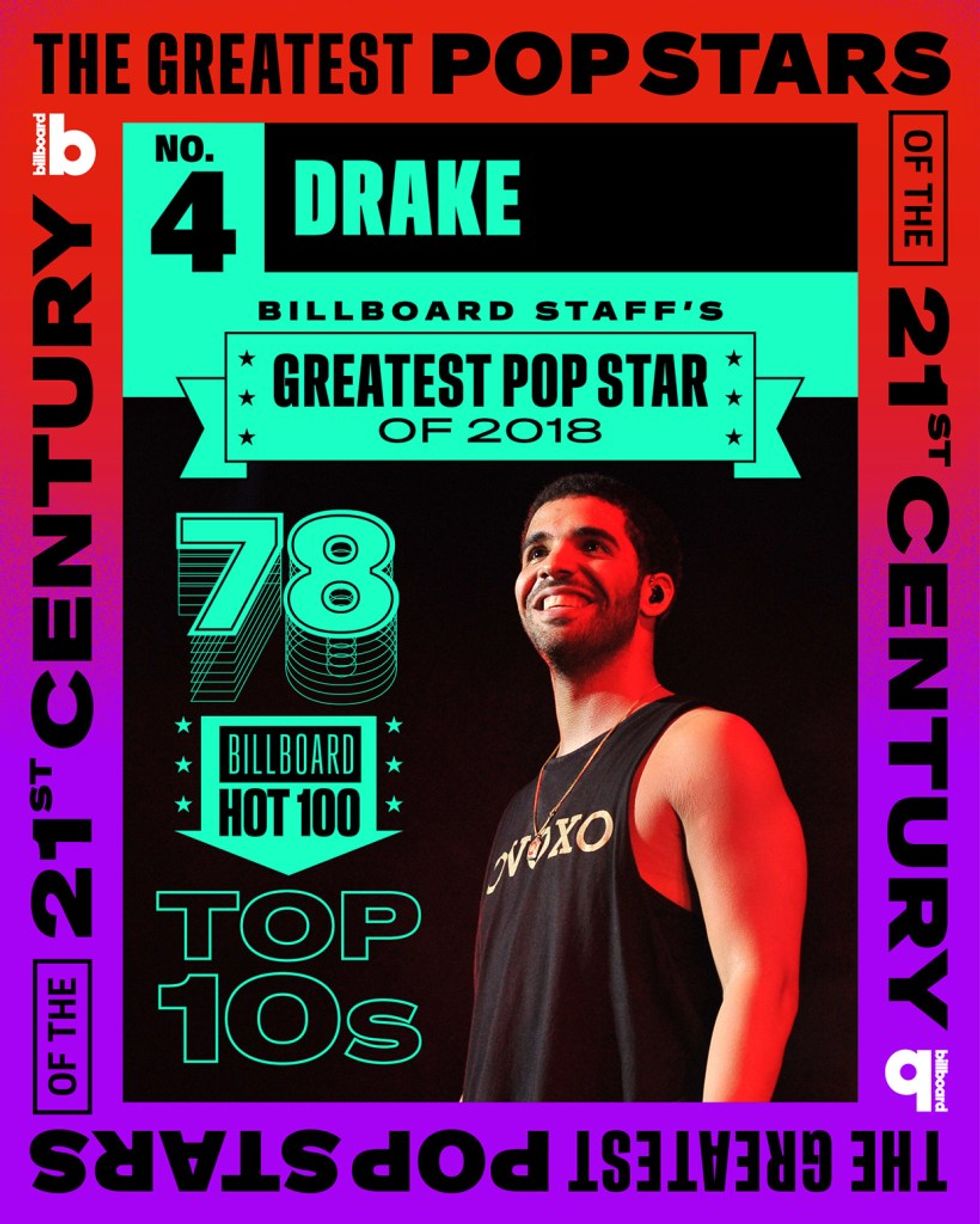
But while Drake may struggle to be as central to pop again as he was at his 2010s peak, that peak remains the stuff of absolute legend — even beyond what Lamar can rightly claim as a culture-moving force. For that decade from 2009 to 2018, Drake changed both the sound and scope of hip-hop and the overall direction of popular music forever. And that decade was not like most other artists’ best decades, which usually include multiple years off from recording and periods where they didn’t feel like being so visible: Drake packed at least 20 years’ worth of tours, albums, hits, features, remixes and one-offs into those 10, while constantly evolving and consistently managing to surprise fans with his flows, his beats, even his (sometimes questionable) accents — not to mention his innovative promotional tactics, his frequently unforgettable music videos and his reliably charming multi-media appearances. He made being a Drake fan fun. He made being a hip-hop and pop fan fun.
And while he may be at the toughest moment of his career currently, betting against a bounceback from Drake — who, lest we forget, was the longest of long shots from Day One to become anything close to what he’s become today — remains a historically ill-advised move. The flipside of the public’s desire to see its heroes take a fall is that, well, everybody also loves a good comeback story. The consummate frontrunner of the past decade is now once again legitimately something of an underdog, which is a mode Drake has excelled in since the beginning. It might not be reasonable to expect the only artist in pop history with over 300 Hot 100 hits to return to the hunger of his mixtape days, but it is undeniably exciting that for the first time in forever, there is once again legitimate room for improvement with Drake — and that may mean his comeback season is on its way again before long.
Read more about the Greatest Pop Stars of the 21st Century here — find our accompanying podcast deep dives and ranking explanations here — and be sure to check back every Tuesday this November as we unveil the rest of our top five, leading up to our No. 1 Greatest Pop Star being revealed on Dec. 3!
THE LIST SO FAR:
25. Katy Perry
24. Ed Sheeran
23. Bad Bunny
22. One Direction
21. Lil Wayne
20. Bruno Mars
19. BTS
18. The Weeknd
17. Shakira
16. Jay-Z
15. Miley Cyrus
14. Justin Timberlake
13. Nicki Minaj
12. Eminem
11. Usher
10. Adele
9. Ariana Grande
8. Justin Bieber
7. Kanye West
6. Britney Spears
5. Lady Gaga
4. Drake

